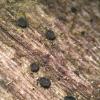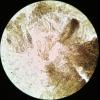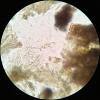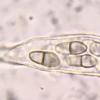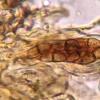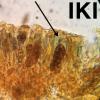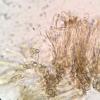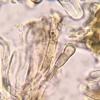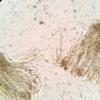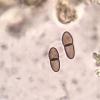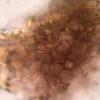
09-12-2025 12:06
 Andgelo Mombert
Andgelo Mombert
Bonjour,Je recherche l'article concernant Hypobryo

12-12-2025 18:39
Mirek GrycHello everyone.Macrofeatures similar to Mollisia b

07-12-2025 16:07
Arnold BüschlenHallo, ich habe in einer Moos-Aufsammlung (epiphy

08-12-2025 21:04
Mark Stevens"Hello everyone,I'm relatively new to microscopy (

08-12-2025 18:59
 Lothar Krieglsteiner
Lothar Krieglsteiner
.. found by a seminar-participant, I do not know t

08-12-2025 17:37
 Lothar Krieglsteiner
Lothar Krieglsteiner
20.6.25, on branch of Abies infected and thickened
Rhizodiscina lignyota ?
Ethan Crenson,
13-02-2023 17:30
Hello all,
I collected this two days ago on bare hardwood in New York City. I was expecting to bring home the much more common Patellaria crassispora, but this is obviously not that. Can anyone confirm this is Rhizodiscina lignyota, or if not, point me in the right direction? I have a vague idea that R. lignyota is fairly common in some places, but I have never found it in my neighborhood.
Spores are brown, one septate, smooth, 9-10.5 x 3.7-4µm
Asci bitunicate, clavate, very faintly IKI+ staining blue over much of the upper surface, 44-56 x 9-10µm
Paraphyses septate, slightly constricted at the septa, up to 4.3µm wide at the tips.
Excipulum textura angularis
Thanks in advance,
Ethan
Hans-Otto Baral,
13-02-2023 18:51

Re : Rhizodiscina lignyota ?
I see no objection to your ID. Abundant brown anchoring hyphae should be there, which gave rise to the name Rhizodiscina. The species is really common.
Ethan Crenson,
13-02-2023 18:57
Re : Rhizodiscina lignyota ?
Thank you, Zotto! in my experience, here in the Northeastern US, it isn't all that common. I have found the very similar Patellaria crassispora and (occasionally) P. atrata at least 70 times (I checked my records), but I have never seen Rhizodiscina until now.
I will look for the anchoring hyphae for extra credit.
